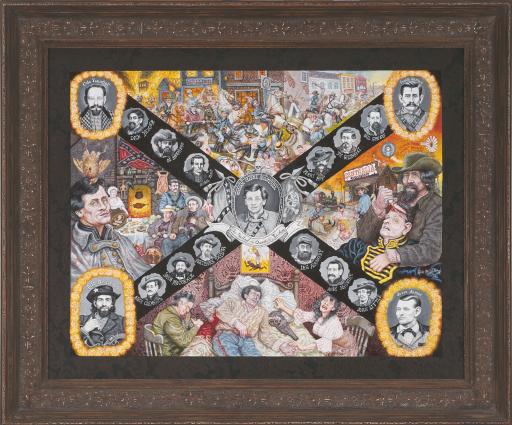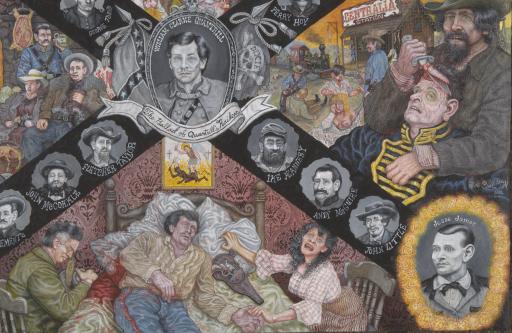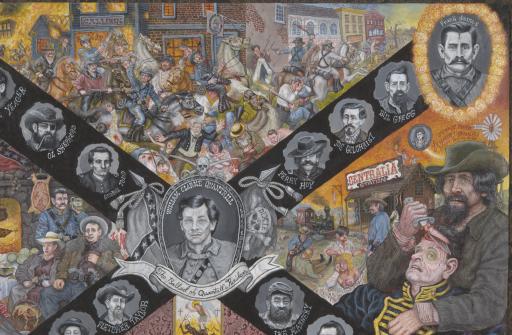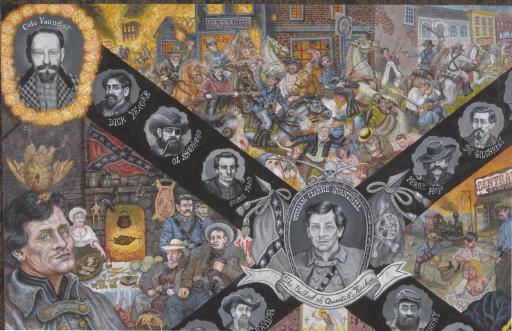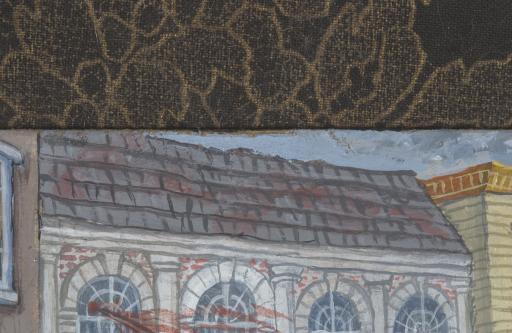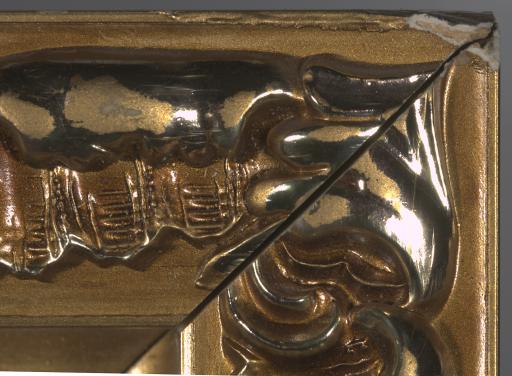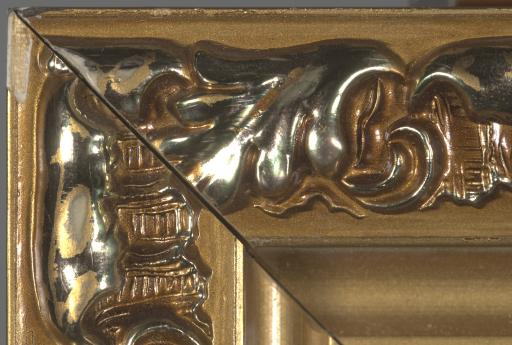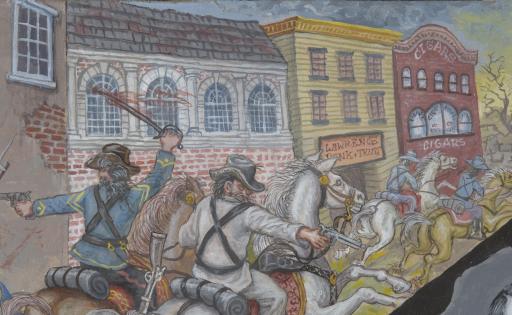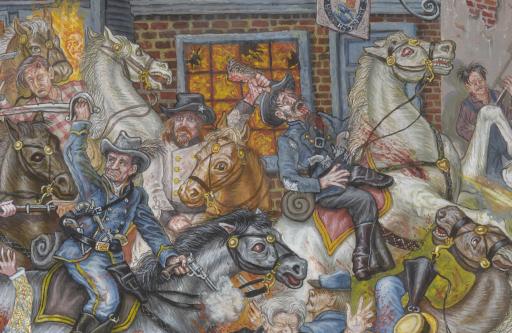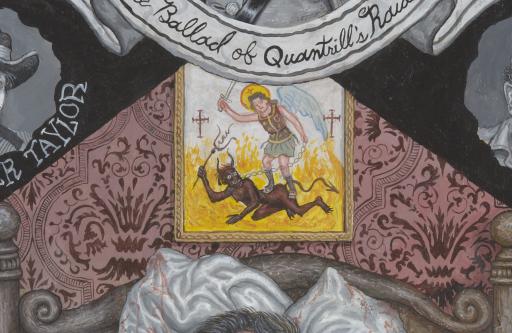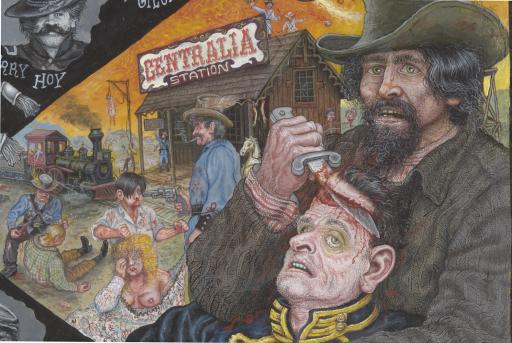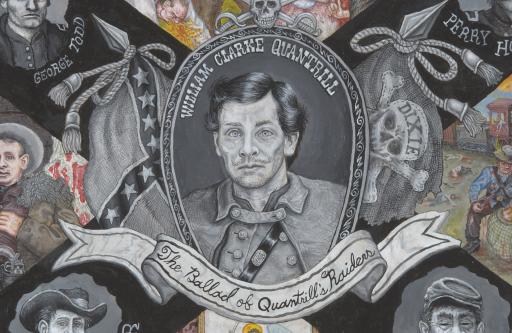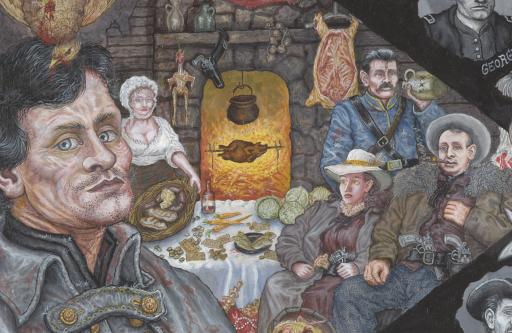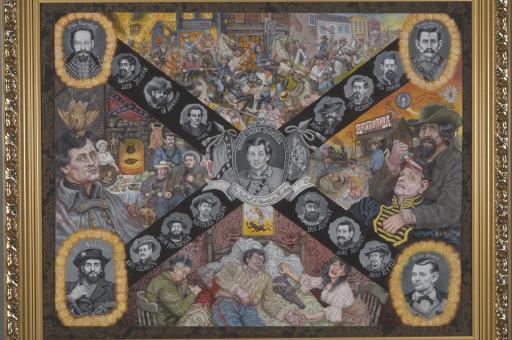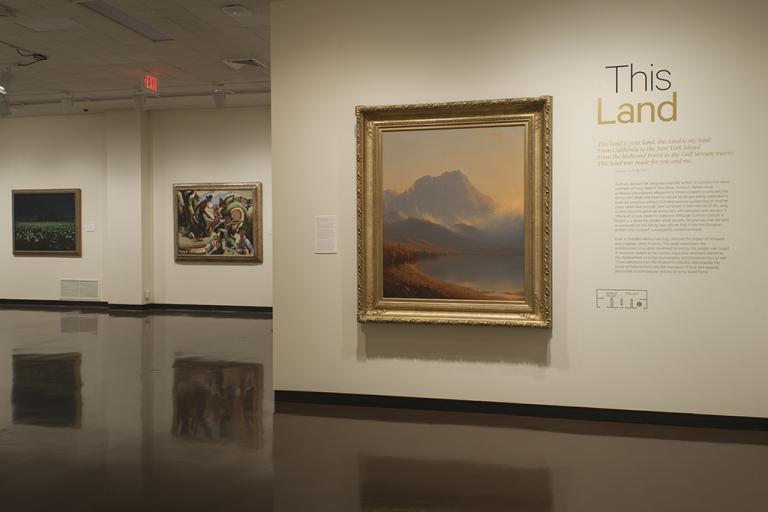The Ballad of Quantrill's Raiders, Joe Coleman
Artwork Overview
Joe Coleman, artist
born 1955
The Ballad of Quantrill's Raiders,
1992
Where object was made: United States
Material/technique: hardboard; cloth; acrylic
Dimensions:
Object Height/Width (Height x Width): 55.9 x 71.1 cm
Object Height/Width (Height x Width): 22 x 28 in
Frame Dimensions (Height x Width x Depth): 26 x 32 x 2 in
Object Height/Width (Height x Width): 55.9 x 71.1 cm
Object Height/Width (Height x Width): 22 x 28 in
Frame Dimensions (Height x Width x Depth): 26 x 32 x 2 in
Credit line: Museum purchase: Helen Foresman Spencer Art Acquisition Fund
Accession number: 2012.0046
Not on display
If you wish to reproduce this image, please submit an image request

